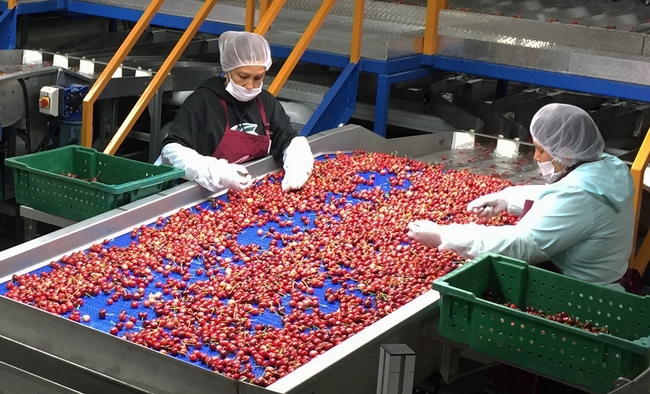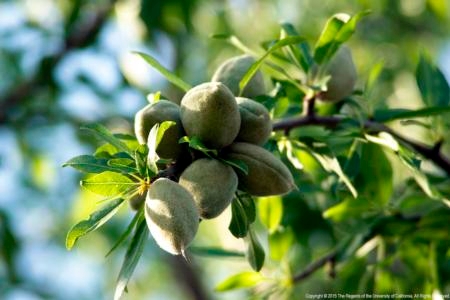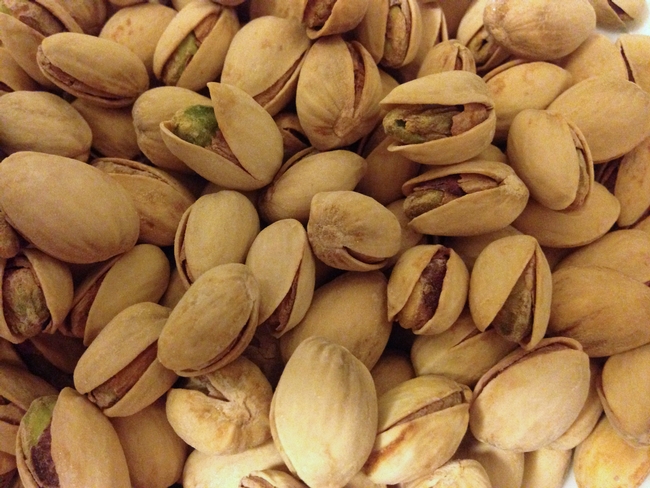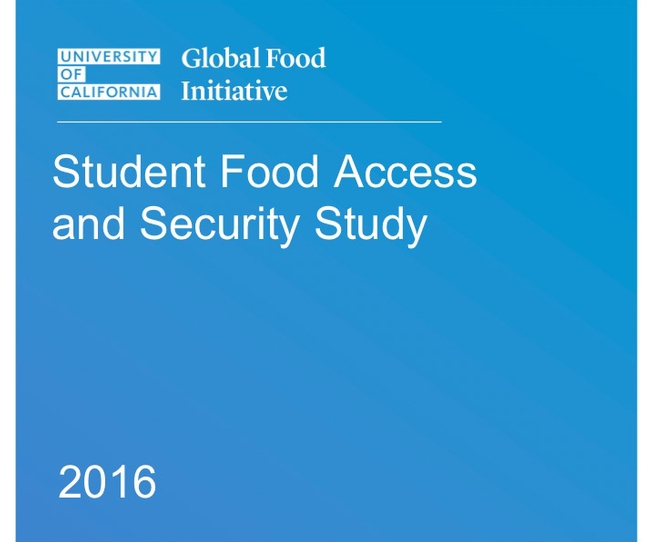Posts Tagged: policy
Catalyst of change Pat Crawford’s research helps advance food policies
Consumers once asked Pat Crawford how to determine the amount of added sugar in foods if the labels only list total sugar. How can we distinguish between the amount of naturally occurring sugars in the product and, on the other hand, the amount of added sugars, the ones that should be avoided because they can have a negative impact on health? “Well,” Crawford said, “they don't make this easy.” She then did the required calculation for Raisin Bran. “First you must count the number of raisins in a serving of Raisin Bran, then you must look up the amount of sugar naturally found in raisins, then multiply that amount by the number of raisins in the product, and, finally, deduct that number from the total sugar listed on the label.” The difficulty in quickly assessing added sugar in a common food surprised everyone.
The San Francisco Chronicle reported this exercise in a 2016 interview with Crawford about newly approved USDA nutrition labels that would include added sugar information and thereby eliminate the need for such complex computations by consumers. Sadly, these nutrition guidelines have yet to come out. Why not, if we know that added sugar is related to heart disease, diabetes, tooth decay and other negative health conditions? Why hasn't this regulation been adopted? Crawford works to provide the research needed by policymakers to reduce the barriers to implementation of helpful policies such as this one.
Pat Crawford's work on improved food labeling is but one example of the way that for decades her timely and rigorous research has demonstrated the role of sugary foods and beverages in the development of diabetes, and obesity and in helping to fuel America's childhood obesity epidemic. In countless ways Crawford, who is retiring this year after more than 40 years of service at the University of California, has supported the adoption of public policies that promote safer, healthier food and beverages for all people, across the state and the nation.
You can draw direct lines from her resume to countless major policy advances in nutrition education and public health. Since earning her master's degree in public health nutrition and her registered dietician credential at UC Berkeley in 1972, Crawford has been a force of unceasing productivity as a researcher, an evaluator, an educator and a leader. Early in her career she managed the nation's largest biracial study of girls' health, the National Growth and Health Study. During the course of this long-term study, she went back to school to obtain her doctorate in public health nutrition. She soon was hired as the first UC Cooperative Extension Nutrition and Obesity Prevention specialist and she co-founded and directed UC Berkeley's Atkins Center for Weight and Health. The work of the center focused largely on food and nutrition policy to improve the health of children, and it provided a structure whereby University research could be effectively shared with community health workers throughout the state. Local and state health professionals found in the center an extension partner eager to conduct research that would answer important questions and provide real-world solutions, productively linking research, policy and practice.
The Center for Weight and Health, which in 2015 merged with the UC ANR Nutrition Policy Institute (NPI), became known for rigorous research that is aligned with UC ANR's core values of addressing food security, obesity, socioeconomically based health disparities, and access to healthy foods. After the merger, Crawford became NPI's Senior Director of Research, working with her long time collaborator, Lorrene Ritchie, the NPI director.
Ritchie stated that in addition to Crawford's academic achievements, she is the consummate mentor — a “career godmother” for Ritchie and many others. She said, “Pat has an uncanny ability of knowing what you are good at — even before you yourself do — and mentoring you to build on that strength. Likewise, she has an uncanny ability to know your weaknesses, and help you to overcome those by developing new skills or pairing you with others who have those skills.”
That kind of nurturing is rare, Ritchie noted, particularly in the competitive environment of academia. Through mentoring, she added, Crawford has ensured new generations of researchers will continue this work.
“Pat has proven that you can be caring and compassionate yet still be highly effective.”
Catalyzing change
What does highly effective look like? A few examples illustrate the impact that Pat Crawford's work has had on nutrition policies and trends.
To improve the food environment at child care centers and schools, the Center/NPI provided the evidence for:
- California's 2010 Healthy Beverages in Childcare Law, requiring child care centers to make water and other healthy beverages available at all times.
- The 2013 Foundations for Healthy Nutrition in Childcare Act, requiring nutrition education for all child care providers.
- “Competitive food” policies — banning unhealthy sodas and snacks that competed with more nutritious school lunches — a policy that started in California and later was implemented at the federal level in the USDA's 2016 “Smart Snacks Standards.”
- The expansion of school garden and cooking programs in California and nationwide.
- An expansion of support for replacing packaged foods with healthier scratch cooking in school cafeterias.
To promote more nutritious food in programs serving low-income families the Center/NPI advocated:
- Improvements in the federal Women, Infants and Children (WIC) program including quadrupling the amount of vegetables and legumes WIC provides and adding information about physical activity needs for young children.
- Food bank policies that increase the amount of fruits and vegetables distributed and reduce the amount of snack foods and sugary beverages. Their free online course on how to make these policy shifts is a popular web resource for food banks across the country.
To advance education and communication:
- Crawford co-founded the first interdisciplinary conference on childhood obesity. Twenty years later, the biennial meeting is the premier obesity conference in the nation.
- The “My Healthy Plate” nutrition-education tool, which replaced the old Healthy Eating Pyramid, was developed, tested, presented and promoted by Crawford and her extension colleagues before the plate concept was officially adopted by USDA in 2011.
- California became the first state to put calories on chain-restaurant menus. Crawford's evaluation of Kaiser Permanente's pilot study of menu-board labeling provided the evidence needed by policymakers. Calorie labeling in chain restaurants has been expanded nationwide.
- Crawford's evaluation of California's SNAP-Ed program, the education arm of the Supplemental Nutrition Assistance Program, (or SNAP, previously known as food stamps), has informed programming focused on the prevention of chronic disease through efficacious nutrition changes in the environment.
Although Crawford would be quick to tell you that her work is collaborative, she has been a researcher or important influence on nearly every population-based nutrition policy success. She has served as president of the California Nutrition Council and on countless state and national committees and task forces focused on improving health and addressing obesity, including being an advisor to California's Let's Get Healthy Task Force. Most recently, she co-authored a seminal Healthy People 2020 report for the U.S. Department of Health and Human Services, Office of Disease Prevention and Health Promotion, on model policies to increase fruit and vegetable intake in the population.
Training the next generation
Given her commitment and her influence, it's no wonder that Pat Crawford won the 2013 David Kessler Award for Extraordinary Contributions to the Public's Health, as well as multiple honors from the American Public Health Association. In 2018, the UC Berkeley School of Public Health honored Crawford as one of its 75 most influential alumni in recognition of her significant contributions to reduce the epidemic of childhood obesity in California and across the country. And she's not done yet — as an emeritus Cooperative Extension specialist, her research will go on. That won't surprise anyone who knows her. As Crawford said in a 2015 interview, “What keeps me passionate is knowing that change is possible when high-quality, policy-relevant research is conducted and communicated to decision-makers and those who work with children.”
To honor the work that Crawford does and to continue this kind of work, the Nutrition Policy Institute has established a student fellowship fund to train the next generation of students on nutrition research and its policy impacts. Donors to the student fellowship fund help honor Crawford and help NPI continue its work to improve the nutrition and health of children.
New tariffs could cost U.S. nut and fruit industries over $3 billion
The ongoing international trade turmoil between the U.S. and other countries has prompted import tariffs on many U.S. agricultural commodities in important export markets, which could hurt U.S. farmers.
A new report released by the University of California Agriculture and Natural Resources' Agricultural Issues Center estimates the higher tariffs could cost major U.S. fruit and nut industries $2.64 billion per year in exports to countries imposing the higher tariffs, and as much as $3.34 billion by reducing prices in alternative markets.
“One way to mitigate the impact of the tariff impacts would be to offer assistance to shift the products to completely new markets where these displaced commodities could be delivered without causing price declines,” said co-author Daniel A. Sumner, director of the UC ANR Agricultural Issues Center and UC Davis professor in the Department of Agricultural and Resource Economics.
When nuts and fruits are diverted back into the remaining markets for their crops, Sumner and co-author Tristan M. Hanon, a UC Davis graduate student researcher, expect farmers to lose revenue from lower prices.
The agricultural economists foresee major losses for many commodities caused by diverting the produce from high tariff countries to sell in the remaining markets.
Almonds alone could lose about $1.58 billion and pistachios could lose about $384 million, according to Sumner and Hanon.
The authors looked at the impact of tariffs on almonds, pecans, pistachios, walnuts, apples, oranges, raisins, sour cherries, sweet cherries and table grapes. All 10 nuts and fruits are perennial crops, growing on trees or vines, so growers cannot easily change their production quantities or plant a different crop.
The U.S. exports 13 percent of its almonds, 14 percent of its pistachios and 22 percent of its pecans to countries imposing the new tariffs. China and Hong Kong are major export markets for U.S. fruits and nuts. In 2016 and 2017, China and Hong Kong spent over $500 million to buy 40 percent of all U.S. almond exports, and nearly $600 million for most of the exported pistachios. Some of the exports to Hong Kong are transshipped to other markets, but most of it stays in the China market.
The new tariffs apply to all ten crops that are exported to China. “We consider most of the exports to Hong Kong with China because we understand that most of the U.S. fruit and nut exports to Hong Kong are destined for China,” Sumner said.
To avoid paying tariffs, there are clues that Hong Kong's open market is the entry point for nuts ultimately shipped to China, in what Sumner calls “leakage.”
“The 7 million people in Hong Kong would have to eat 20 times the pistachios consumed by people in other countries if they aren't sending them on to China, the Philippines and other Asian countries,” Sumner said. “China turns its back on leakage, but those commodities may be vulnerable if China decides to crack down.”
After the Trump administration imposed tariffs on an additional $16 billion worth of Chinese goods, China announced duties on $16 billion of American goods. Another round of new tariffs has now been scheduled.
In India, Mexico and Turkey, new higher tariffs apply to selected fruit and nut products. India, which buys roughly half of all exported U.S. almonds, applies new tariffs to almonds, walnuts and apples. Turkey's new tariffs apply to almonds, pecans, pistachios and walnuts. Mexico's tariffs target apples, for which the country paid about $250 million last year.
U.S. Secretary of Agriculture Sonny Perdue announced up to $12 billion in federal aid to farmers to soften the impact of tariffs.
“The U.S. government could purchase the commodities that would have been exported,” Sumner said. “Of course, the produce must be diverted from remaining markets to new market channels to avoid driving down prices.”
The full report “Economic Impacts of Increased Tariffs that have Reduced Import Access for U.S. Fruit and Tree Nuts Exports to Important Markets,” along with details on data, sources and methods, can be downloaded for free at the UC Agricultural Issues Center website at http://aic.ucdavis.edu.
[This article was updated at 10 pm, Aug. 14, to update the dollar estimates in this sentence: "Almonds alone could lose about $1.58 billion and pistachios could lose about $384 million, according to Sumner and Hanon."]
Nutrition Policy Institute study highlights benefits of school lunch
Lunches served in the National School Lunch Program have higher nutritional quality than lunches brought from home, according to the largest comparison study conducted to date.
Published in the November 2016 issue of the Journal of the Academy of Nutrition and Dietetics, the study, conducted by researchers at UC's Nutrition Policy Institute, involved nearly 4,000 elementary school students in Southern California.
“This rigorous study confirms what we have long known: The school lunch program, which has served the country's students since 1946, makes an invaluable contribution to their nutritional well-being, their health and their academic performance," said Lorrene Ritchie, Ph.D., director of the Nutrition Policy Institute and a senior author of this study. "And thanks to the recent, improved nutrition standards, it will only provide stronger, more essential support for our children's success.”
School lunch consumption was associated with higher overall diet quality. School lunch eaters also consumed diets that were higher in dairy-rich foods, lower in empty calories from solid fats and added sugars, and lower in refined grains than students who ate lunches from home.
Established in 1946, the National School Lunch Program is a federal nutrition assistance program that provides nutritionally balanced, low-cost or free lunches in over 100,000 K-12 schools throughout the United States. School lunches are required to meet certain nutrition standards based on the latest Dietary Guidelines for Americans. New requirements increase the availability of fruits, vegetables and whole grains and reduce sodium and fat in school lunches. Guidelines on calorie limits are set to ensure age-appropriate sized meals for grades K-5, 6-8 and 9-12.
During the 2014-15 school year, the program served lunches to about 30.5 million children each school day. More than 21.5 million of these students qualified for free or reduced-price service. Given the program's broad reach and its targeting of low-income children, the nutritional improvements shown in this study are of considerable benefit to needy students for whom school lunch may represent roughly one-third of their daily calories.
Since the study was conducted, new and more rigorous nutritional standards have been implemented, thus increasing the likelihood that school lunches are contributing to healthy overall diets – and reversing the extremely worrisome obesity epidemic. Currently as many as one-third of U.S. youth are obese or overweight.
UC commits $3.3 million to tackle food access issues
Guided by the findings of an in-depth University of California survey, UC President Janet Napolitano has approved $3.3 million in new funding over the next two years to help students regularly access nutritious food on campus and off, UC announced today (July 11).
The funding, which includes $151,000 for each of UC's 10 campuses, is in addition to the $75,000 per campus that Napolitano allocated in 2015 to address the immediate challenges of ensuring that students have ready access to nutritious food, and reflects the UC Global Food Initiative goal of promoting a nutritious, sustainable food supply.
“Food security is a critical issue not only on college campuses, but throughout our country and the world,” Napolitano said. “We undertook this survey, and are acting on its findings, because the University is serious about addressing real, long-term solutions to improve the well-being of our students.”
To better gauge the food security of its students, UC administered an online survey in spring 2015 to a randomly selected sample of students from all UC campuses. Of the 66,000 students asked to participate, nearly 9,000 completed the survey – a 14 percent response rate. Undergraduate and graduate students were invited to participate in one of two ways: through the National College Health Assessment II survey administered by the American College Health Association, or through an independent campus survey administered by the UC Office of the President‘s Institutional Research and Academic Planning Division. In both formats, the survey utilized a six-item U.S. Department of Agriculture food security module.
The survey responses were evaluated by the UC Nutrition Policy Institute, part of UC Agriculture and Natural Resources.
According to the survey, 19 percent of UC students indicated they had “very low” food security, which the USDA defines as experiencing reduced food intake at times due to limited resources. An additional 23 percent were characterized as having “low” food security, defined by the USDA as reduced quality, variety or desirability of diet, with little or no indication of reduced food intake.
Based on the results of this Food Access and Security study and in conjunction with student representatives systemwide, UC developed an action plan tailored to the needs of individual campuses while maximizing coordination among them. The plan includes:
- Expanding food pantry storage and access
- Increasing collaboration with state and county offices to register students for CalFresh, California's nutrition assistance program
- Establishing and expanding awareness campaigns on student support services and food access
- Expanding the existing Swipe Out Hunger programs, which allow university students to donate excess dollars on their meal plan to reduce hunger on campuses
- Integrating food preparation and secure storage space into new student housing design and construction
- Enhancing financial aid communications about housing and food costs
These measures build on UC's efforts to address the issues of student food access. In 2014, Napolitano and UC's 10 chancellors launched the UC Global Food Initiative and in 2015 asked each campus to form a food security working group that included undergraduate and graduate students, faculty, staff, administration, and community experts. These working groups formalized ongoing campus efforts on all nine undergraduate campuses to establish food pantries for emergency relief and to develop plans to expand the Swipe Out Hunger programs. UC also convened the California Higher Education Food Summit at UC Santa Barbara in 2015 and UC Irvine in 2016 to discuss strategies for improving food security.
The study is available to download here: http://ucop.edu/global-food-initiative/best-practices/food-access-security/student-food-access-and-security-study.pdf
The UC Nutrition Policy Institute drives a drinking water movement
The alliance aims to make plain water the easy, appealing substitute for sugary beverages – soda, energy drinks, fruit drinks, and sweetened coffee and tea drinks. The alliance is also actively working on the safety of tap water in the nation's schools and childcare settings.
“To make water the beverage of choice will require a movement,” said Christina Hecht, a member of the NPI team. “NPI will build bridges, spearhead the creation of shared resources, align messages, strategies and aims, and coordinate strong external communications.”
NPI was formed by UC Agriculture and Natural Resources in 2014 to conduct, evaluate and share research related to the impact of nutrition and physical activity on public health. The W.K. Kellogg Foundation has awarded NPI a $960,000 grant to coordinate the National Drinking Water Alliance for three years.
“Even when water is available, too many children and adults choose sugar-sweetened beverages,” said Hecht, who will serve as the National Drinking Water Alliance coordinator. “In our American diet, sugary drinks are the top source of added sugars for both adults and children, and, remarkably, they are the single largest source of calories for teens aged 14 to 18.”
But Hecht is quick to point out that if people are to make the switch to water, water needs to be easily accessible and they need to know that it is safe to drink.
High consumption of sugar-sweetened drinks is associated with obesity and other chronic health problems, such as heart disease and diabetes. UCLA scientists reported in March that the diabetes epidemic in California is “out of control.” The study says 55 percent of the state's population has prediabetes or diabetes – many of them are undiagnosed.
“Simply switching to water is a relatively easy lifestyle change that can have a big impact on the intake of added sugar and excess calories, reducing diabetes risk,” Hecht said. “It can also improve oral health.”
The National Drinking Water Alliance includes government agencies, education officials, researchers, water industries, and non-governmental organizations like the Center for Science in the Public Interest, American Academy of Pediatrics Campaign for Dental Health, and the American Heart Association. They believe by sharing knowledge, resources and connections, they will hasten progress toward their common goal.
Fortunately, the current state of safe drinking water in the U.S. is mostly favorable. About 90 percent of Americans get their water from public utilities and 95 percent of those supply safe water. In some areas, however, water can become contaminated on the path between utility and tap, typically with lead. Sometimes other contaminants can leach in through breaks in pipes.
“We all recognize that, if we are going to tell people to drink water, they need to have confidence that the tap water is safe,” Hecht said. “At the moment, we don't know the magnitude of the problem of unsafe drinking water. The alliance is highly focused on policy as the most effective tool to bring about broad change.”
The National Drinking Water Alliance plans a Congressional hearing on national drinking water and is developing best practices for effective access to safe drinking water in schools and childcare settings.











